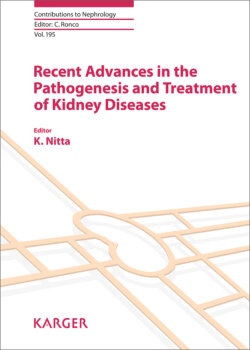Читать книгу Recent Advances in the Pathogenesis and Treatment of Kidney Diseases - Группа авторов - Страница 26
На сайте Литреса книга снята с продажи.
Perspectives
ОглавлениеAlmost all patients whose steroid and other immunosuppressive therapies are withdrawn after rituximab treatment have relapses after the recovery of peripheral B-cell counts. Therefore, further modification of rituximab treatment, including repeated courses of rituximab and adjunct immunosuppressive therapies, may be necessary for maintaining long-term remission. Kimata et al. [19] reported a case series which showed that rituximab administration for 4 times at 3-month intervals induced long-term remission without serious adverse events in children with complicated steroid-dependent MCNS [19]. A case series by Ito et al. [20] suggested that maintenance therapy with mycophenolate mofetil after rituximab administration was effective for maintaining long-term remission in children with complicated frequently relapsing NS/steroid-dependent NS [20]. The efficacy, safety, and cost-effectiveness of various rituximab dosing regimens should be compared to determine an appropriate rituximab treatment regimen for complicated frequently relapsing NS/steroid-dependent NS in adults. Large-scale multicenter cohort studies or multicenter RCTs to compare treatment outcomes after different dosing regimens are required to clarify the optimal dosage of rituximab to use. We have recently shown that treatment with rituximab was possibly superior to previous pharmacological treatments from a health economics perspective [21].
